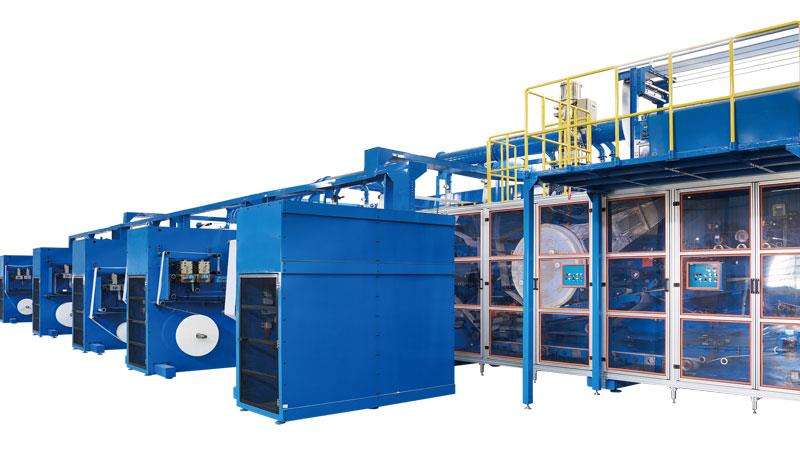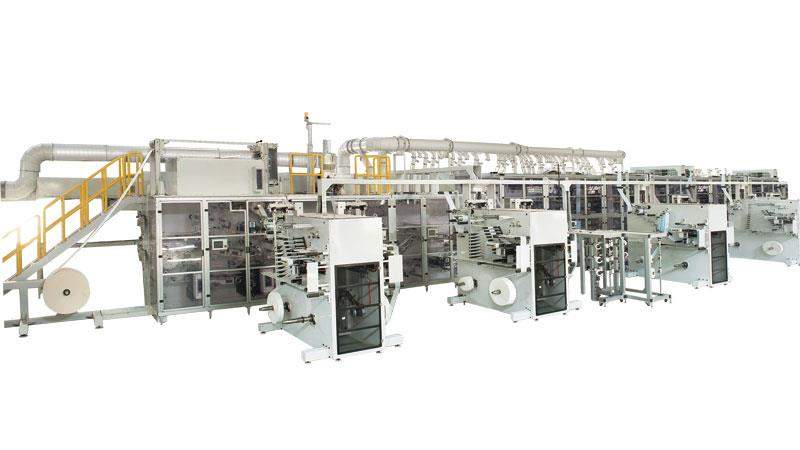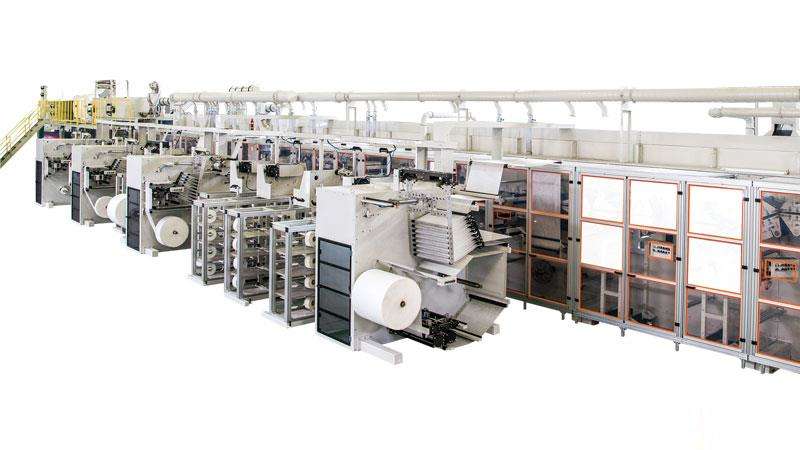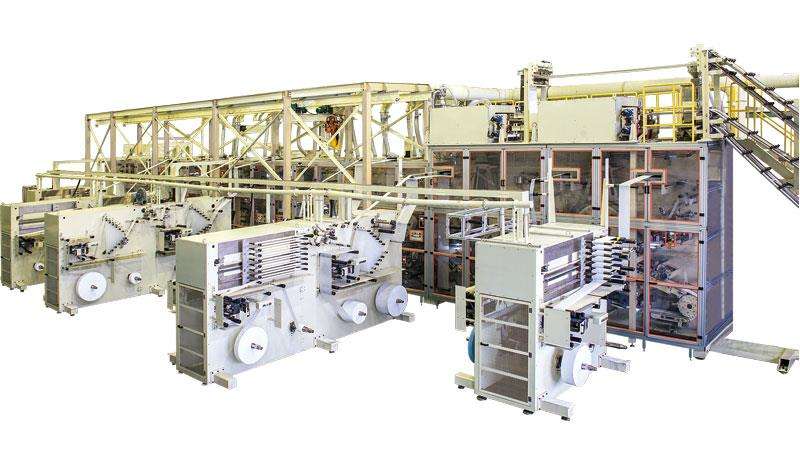International industry standard disposable hygiene devices
Publish:2015-12-04 View:5658
Disposable sanitary hygiene standards published by the State
National Standards for disposable sanitary products health standards GB 15979-2002.
1 Scope : This standard specifies the use of disposable products and production hygiene standards of sanitation , disinfection of biological monitoring and evaluation criteria and the appropriate test methods , as well as raw materials and products , disinfection , storage , transportation hygiene requirements and product labeling requirements .
In this standard , single-use sanitary means: This standard applies to the country engaged in the production of disposable sanitary products and sales departments, units or individuals , but also for the distribution of disposable sanitary products imported departments, units or individuals.
2 Reference Standard :
The following standards contain provisions which, through reference in this text, constitute provisions of the standard . At time of publication , the editions indicated were valid. All standards are subject to revision, the standard parties should explore the possibility of using the latest version of the following standards .
Evaluation methods and standards GB 15981-1995 disinfection and sterilization effect .
3 Definitions :
This standard uses the following definitions: disposable sanitary products .
Discarded after a single use , direct or indirect contact with the human body , and to achieve physiological health or health care ( antibacterial or antimicrobial ) purposes using a variety of daily necessities , product traits can be a solid or a liquid . For example , single-use gloves or finger cots ( not including medical gloves or finger ) , paper towels , wet wipes , sanitary wipes , phone film , hats , masks, underwear, womens menstrual hygiene products ( including sanitary pads ) , diapers, etc. excreta hygiene products ( not including wrinkles toilet paper toilet paper , etc. ) , condoms , etc., collectively known as the " hygiene " in this standard .
4 product health indicators :
4.1 Appearance must be clean, in line with the hygiene inherent traits, no abnormal odor and foreign matter .
4.2 shall not adversely stimulate skin and mucous membranes and allergic reactions , and other damaging effects .
4.3 Table 1, the product shall comply with microbiological indicators .
Table 1
Product Category microbiological indicators
Bioburden 1) cfu / g total number of bacterial colonies cfu / g or cfu / mL pyogenic bacteria pathogenic coliforms 2 ) the total number of fungal colonies cfu / g or cfu / mL
Gloves or finger cots , paper towels , wet wipes , hats, underwear , telephone membrane . ≤ 200 ≤ 100 not detected not detected
Antibacterial ( or bacteriostatic ) liquid products not detected not detected ≤ 200 ≤ 100
Sanitary wipes . ≤ 20 not detected not detected not detected
Masks .....
Ordinary level . ≤ 200 ≤ 100 not detected not detected
Disinfection level ≤ 10 000 ≤ 20 not detected not detected not detected
Womens menstrual hygiene products .....
Ordinary level . ≤ 200 ≤ 100 not detected not detected
Disinfection level ≤ 10 000 ≤ 20 not detected not detected not detected
Excrement diapers and other hygiene products .....
Ordinary level . ≤ 200 ≤ 100 not detected not detected
Disinfection level ≤ 10 000 ≤ 20 not detected not detected not detected
Condoms . ≤ 20 not detected not detected not detected
1 ) If the Bioburden exceed the values , the index should be a corresponding increase in the killing , so to achieve this standard bacterial and fungal limits. 2 ) refers pathogenic pyogenic bacteria Pseudomonas aeruginosa, Staphylococcus aureus and Streptococcus .
4.4 In addition to sanitary wipes in Table 1 must meet microbiological standards, Escherichia coli and Staphylococcus aureus killing rate shall be ≥ 90%, For marked effect on fungi , Candida albicans killing must rate of ≥ 90%, the bactericidal action to be kept at room temperature for at least 1 year.
4.5 antibacterial ( or bacteriostatic ) products in addition to Table 1 must meet the same level of similar products microbiological criteria, E. coli and Staphylococcus aureus antibacterial rate must be ≥ 50% ( dissolution of ) or > 26% ( non- dissolution of ) , for indicating the role of fungi , Candida albicans must inhibition rate ≥ 50% ( dissolution of ) or > 26% ( non-eluting ) , and its inhibitory effect shall be kept at room temperature for at least 1 year .
4.5 Any time sterilized by ethylene oxide hygiene products factory , the amount of ethylene oxide residues must be ≤ 250μg / g.
5 Production Environmental Health Indicators :
5.1 Assembly and packaging workshop airborne bacteria colony count should be ≤ 2 500 cfu/m3.
Table 5.2 Total surface of bacterial colonies should be ≤ 20 cfu/cm2.
5.3 Total number of workers hand surface bacterial colonies should ≤ 300 cfu / hand and not be detected pathogens.
6 disinfection of biological monitoring and evaluation
6.1 ethylene oxide sterilization : Bacillus subtilis var (ATCC 9372) killing index should be ≥ 103.
6.2 ionizing radiation sterilization : For short bacillus spores E6d (ATCC 27142) killing index should ≥ 103.
6.3 pressure steam sterilization : The spores of Bacillus stearothermophilus (ATCC 7953) killing index should ≥ 103.
7 raw health requirements:
7.1 Raw materials should be non-toxic, harmless , non-polluting ; packaging materials should be clean , clearly marked with the name of inclusion , production units, production date or batch number ; affect the health quality of raw materials should not be exposed ; special requirements of raw materials should be marked storage conditions and shelf life.
7.2 pairs of raw materials affect product quality should be a corresponding health inspection reports or evidence, if necessary microbiological monitoring and take appropriate action.
7.3 prohibit the use of waste as raw materials or semi-finished products hygiene products .
8 production environment and process hygiene requirements
8.1 production areas surrounding environment should be clean, no trash , no mosquitoes, flies and other pests breeding ground .
8.2 production area should have enough space to meet the needs of production, distribution must comply with requirements of the production process , separating reasonable people, objects diversion, no reverse product flow and cross . Raw materials and finished products out into the proper anti-pollution measures and strict rules to reduce the production environment microbial contamination.
8.3 production area should be configured effective dust , insects and rodents facilities , floors, walls , work surfaces should be flat , smooth, not dust , easy removal and cleaning and disinfection , adequate lighting and air disinfection or decontamination measures to ensure the production environment to meet the requirements of this standard in Chapter 5 .
8.4 configuration necessary production and quality inspection equipment , a complete production and quality records , and ensure the quality of health products .
8.5 Production process used flammable, explosive materials or harmful substances , must have the appropriate security measures , in line with the relevant national standards or regulations.
8.6 Raw materials and finished products should be stacked separately , to be tested , qualified, unqualified raw materials and finished products should be strictly separated from the pile and set clear signs . Warehouse should be dry , clean , ventilated, located insects and rodents facilities and mat board positions , in line with the product storage conditions .
8.7 incumbent enter the production area and work shoes work clothes , work wear hats , direct contact with the bare product staff need to wear a mask , wash and disinfect hands or wear gloves ; pre-production areas should be provided with the appropriate dressing room , wash basin , pool disinfection and buffers.
8.8 persons engaged in the production of hygiene products should maintain personal hygiene , can not leave nails , work will not wear jewelry, long hair should be in the working volume cap . Dysentery , typhoid , viral hepatitis, active tuberculosis, genital warts, gonorrhea and suppurative or exudative skin disease or pathogen carriers shall not participate in direct contact with the production activities.
8.9 persons engaged in the production of hygiene products should be pre-job and on a regular basis ( once a year ) health check and health knowledge ( including production and health, personal hygiene, relevant standards and specifications ) training, those who pass before induction .
9 disinfection process requires :
9.1 disinfectant level disinfection must be the final product of ethylene oxide , ionizing radiation or other valid pressure steam sterilization methods , the use of disinfection equipment must comply with the relevant health standards.
9.2 based on product hygiene standards after the initial contamination of bacteria and disinfection of biological monitoring and evaluation standards sterilization procedures, technical parameters, operating system , proven disinfection process in strict accordance with established operations . The disinfection procedures , technical parameters or affect disinfection of raw materials or the production process should be re- verified after the change to determine disinfection process .
9.3 Every process must be appropriate disinfection process ( physical ) and chemical indicator monitoring, monthly monitoring with appropriate biological indicator only when the process monitoring, chemical monitoring , biological monitoring meet the requirements , the article to be sterilized to the factory .
9.4 products after disinfection treatment, appearance and performance should be disinfected before no visible difference.
10 packaging, transportation and storage requirements:
10.1 execute hygiene transport or storage units or individuals , should be strictly in accordance with the producers of the transport and storage requirements for transportation or storage.
10.2 direct contact with the product packaging materials must be non-toxic, harmless , clean product of all packaging materials must be of sufficient tightness and firmness to achieve a guarantee of the product under normal conditions of transport and storage free from pollution.
11 Product labeling requirements :
11.1 Product identification shall comply with "Product Quality Law" and marked the implementation of standards of hygiene number and production date and shelf life (valid ) or production lot and limited use date on the product packaging.
11.2 disinfectant level product sales should also indicate " sterilizing grade " words and disinfected or sterilized batch number and expiration date , and limited use of dates , marked " sterilizing grade " words and disinfection unit and address , method of disinfection in the transport packaging packaging, sterilization lot number and expiration date or sterilization dates and limited use .
National Standards for disposable sanitary products health standards GB 15979-2002.
1 Scope : This standard specifies the use of disposable products and production hygiene standards of sanitation , disinfection of biological monitoring and evaluation criteria and the appropriate test methods , as well as raw materials and products , disinfection , storage , transportation hygiene requirements and product labeling requirements .
In this standard , single-use sanitary means: This standard applies to the country engaged in the production of disposable sanitary products and sales departments, units or individuals , but also for the distribution of disposable sanitary products imported departments, units or individuals.
2 Reference Standard :
The following standards contain provisions which, through reference in this text, constitute provisions of the standard . At time of publication , the editions indicated were valid. All standards are subject to revision, the standard parties should explore the possibility of using the latest version of the following standards .
Evaluation methods and standards GB 15981-1995 disinfection and sterilization effect .
3 Definitions :
This standard uses the following definitions: disposable sanitary products .
Discarded after a single use , direct or indirect contact with the human body , and to achieve physiological health or health care ( antibacterial or antimicrobial ) purposes using a variety of daily necessities , product traits can be a solid or a liquid . For example , single-use gloves or finger cots ( not including medical gloves or finger ) , paper towels , wet wipes , sanitary wipes , phone film , hats , masks, underwear, womens menstrual hygiene products ( including sanitary pads ) , diapers, etc. excreta hygiene products ( not including wrinkles toilet paper toilet paper , etc. ) , condoms , etc., collectively known as the " hygiene " in this standard .
4 product health indicators :
4.1 Appearance must be clean, in line with the hygiene inherent traits, no abnormal odor and foreign matter .
4.2 shall not adversely stimulate skin and mucous membranes and allergic reactions , and other damaging effects .
4.3 Table 1, the product shall comply with microbiological indicators .
Table 1
Product Category microbiological indicators
Bioburden 1) cfu / g total number of bacterial colonies cfu / g or cfu / mL pyogenic bacteria pathogenic coliforms 2 ) the total number of fungal colonies cfu / g or cfu / mL
Gloves or finger cots , paper towels , wet wipes , hats, underwear , telephone membrane . ≤ 200 ≤ 100 not detected not detected
Antibacterial ( or bacteriostatic ) liquid products not detected not detected ≤ 200 ≤ 100
Sanitary wipes . ≤ 20 not detected not detected not detected
Masks .....
Ordinary level . ≤ 200 ≤ 100 not detected not detected
Disinfection level ≤ 10 000 ≤ 20 not detected not detected not detected
Womens menstrual hygiene products .....
Ordinary level . ≤ 200 ≤ 100 not detected not detected
Disinfection level ≤ 10 000 ≤ 20 not detected not detected not detected
Excrement diapers and other hygiene products .....
Ordinary level . ≤ 200 ≤ 100 not detected not detected
Disinfection level ≤ 10 000 ≤ 20 not detected not detected not detected
Condoms . ≤ 20 not detected not detected not detected
1 ) If the Bioburden exceed the values , the index should be a corresponding increase in the killing , so to achieve this standard bacterial and fungal limits. 2 ) refers pathogenic pyogenic bacteria Pseudomonas aeruginosa, Staphylococcus aureus and Streptococcus .
4.4 In addition to sanitary wipes in Table 1 must meet microbiological standards, Escherichia coli and Staphylococcus aureus killing rate shall be ≥ 90%, For marked effect on fungi , Candida albicans killing must rate of ≥ 90%, the bactericidal action to be kept at room temperature for at least 1 year.
4.5 antibacterial ( or bacteriostatic ) products in addition to Table 1 must meet the same level of similar products microbiological criteria, E. coli and Staphylococcus aureus antibacterial rate must be ≥ 50% ( dissolution of ) or > 26% ( non- dissolution of ) , for indicating the role of fungi , Candida albicans must inhibition rate ≥ 50% ( dissolution of ) or > 26% ( non-eluting ) , and its inhibitory effect shall be kept at room temperature for at least 1 year .
4.5 Any time sterilized by ethylene oxide hygiene products factory , the amount of ethylene oxide residues must be ≤ 250μg / g.
5 Production Environmental Health Indicators :
5.1 Assembly and packaging workshop airborne bacteria colony count should be ≤ 2 500 cfu/m3.
Table 5.2 Total surface of bacterial colonies should be ≤ 20 cfu/cm2.
5.3 Total number of workers hand surface bacterial colonies should ≤ 300 cfu / hand and not be detected pathogens.
6 disinfection of biological monitoring and evaluation
6.1 ethylene oxide sterilization : Bacillus subtilis var (ATCC 9372) killing index should be ≥ 103.
6.2 ionizing radiation sterilization : For short bacillus spores E6d (ATCC 27142) killing index should ≥ 103.
6.3 pressure steam sterilization : The spores of Bacillus stearothermophilus (ATCC 7953) killing index should ≥ 103.
7 raw health requirements:
7.1 Raw materials should be non-toxic, harmless , non-polluting ; packaging materials should be clean , clearly marked with the name of inclusion , production units, production date or batch number ; affect the health quality of raw materials should not be exposed ; special requirements of raw materials should be marked storage conditions and shelf life.
7.2 pairs of raw materials affect product quality should be a corresponding health inspection reports or evidence, if necessary microbiological monitoring and take appropriate action.
7.3 prohibit the use of waste as raw materials or semi-finished products hygiene products .
8 production environment and process hygiene requirements
8.1 production areas surrounding environment should be clean, no trash , no mosquitoes, flies and other pests breeding ground .
8.2 production area should have enough space to meet the needs of production, distribution must comply with requirements of the production process , separating reasonable people, objects diversion, no reverse product flow and cross . Raw materials and finished products out into the proper anti-pollution measures and strict rules to reduce the production environment microbial contamination.
8.3 production area should be configured effective dust , insects and rodents facilities , floors, walls , work surfaces should be flat , smooth, not dust , easy removal and cleaning and disinfection , adequate lighting and air disinfection or decontamination measures to ensure the production environment to meet the requirements of this standard in Chapter 5 .
8.4 configuration necessary production and quality inspection equipment , a complete production and quality records , and ensure the quality of health products .
8.5 Production process used flammable, explosive materials or harmful substances , must have the appropriate security measures , in line with the relevant national standards or regulations.
8.6 Raw materials and finished products should be stacked separately , to be tested , qualified, unqualified raw materials and finished products should be strictly separated from the pile and set clear signs . Warehouse should be dry , clean , ventilated, located insects and rodents facilities and mat board positions , in line with the product storage conditions .
8.7 incumbent enter the production area and work shoes work clothes , work wear hats , direct contact with the bare product staff need to wear a mask , wash and disinfect hands or wear gloves ; pre-production areas should be provided with the appropriate dressing room , wash basin , pool disinfection and buffers.
8.8 persons engaged in the production of hygiene products should maintain personal hygiene , can not leave nails , work will not wear jewelry, long hair should be in the working volume cap . Dysentery , typhoid , viral hepatitis, active tuberculosis, genital warts, gonorrhea and suppurative or exudative skin disease or pathogen carriers shall not participate in direct contact with the production activities.
8.9 persons engaged in the production of hygiene products should be pre-job and on a regular basis ( once a year ) health check and health knowledge ( including production and health, personal hygiene, relevant standards and specifications ) training, those who pass before induction .
9 disinfection process requires :
9.1 disinfectant level disinfection must be the final product of ethylene oxide , ionizing radiation or other valid pressure steam sterilization methods , the use of disinfection equipment must comply with the relevant health standards.
9.2 based on product hygiene standards after the initial contamination of bacteria and disinfection of biological monitoring and evaluation standards sterilization procedures, technical parameters, operating system , proven disinfection process in strict accordance with established operations . The disinfection procedures , technical parameters or affect disinfection of raw materials or the production process should be re- verified after the change to determine disinfection process .
9.3 Every process must be appropriate disinfection process ( physical ) and chemical indicator monitoring, monthly monitoring with appropriate biological indicator only when the process monitoring, chemical monitoring , biological monitoring meet the requirements , the article to be sterilized to the factory .
9.4 products after disinfection treatment, appearance and performance should be disinfected before no visible difference.
10 packaging, transportation and storage requirements:
10.1 execute hygiene transport or storage units or individuals , should be strictly in accordance with the producers of the transport and storage requirements for transportation or storage.
10.2 direct contact with the product packaging materials must be non-toxic, harmless , clean product of all packaging materials must be of sufficient tightness and firmness to achieve a guarantee of the product under normal conditions of transport and storage free from pollution.
11 Product labeling requirements :
11.1 Product identification shall comply with "Product Quality Law" and marked the implementation of standards of hygiene number and production date and shelf life (valid ) or production lot and limited use date on the product packaging.
11.2 disinfectant level product sales should also indicate " sterilizing grade " words and disinfected or sterilized batch number and expiration date , and limited use of dates , marked " sterilizing grade " words and disinfection unit and address , method of disinfection in the transport packaging packaging, sterilization lot number and expiration date or sterilization dates and limited use .
Recommend
More+



 +86 595 22488588
+86 595 22488588












 +86 595 22488588
+86 595 22488588